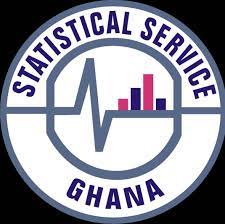In the third quarter of 2022, there were 1.76 million unemployed Ghanaians, according to GSS


According to the Ghana Statistical Service (GSS), there were around 1.76 million unemployed people in the third quarter of 2022.
According to the GSS, among this cohort, women made up two out of every three unemployed people.
About 157,000 people, or one quarter’s worth of unemployment, were unemployed over the course of the three quarters.
Out of the approximately 11 million people employed during each quarter, only 7.5 million continued to be employed over the course of the three quarters. This shows that throughout the course of the three quarters, roughly 3.5 million people changed jobs, revealing vulnerabilities.
This was included in the Third Quarter Labor Statistics for the Ghana 2022 Annual Household Income and Expenditure Survey (AHIES), which the GSS released on Wednesday, May 3.
The report stated that the transition from informal employment to unemployment is typically five times greater than the transition from formal work to unemployment. GSS

Find the complete report below.
The Ghana 2022 Annual Household Survey is now available from the Ghana Statistical Service (GSS).
Income and Expenditure Survey (AHIES) Third Quarter Labour Statistics.
The report was released on Wednesday 3rd May 2023 at the Accra International Conference
Centre.
The programme was chaired by Hon. Bright Wireko-Brobbey, the Deputy Minister of Employment and Labour Relations.
The Government Statistician, Professor Samuel Kobina Annim made a presentation
on the highlights from the report which included statistics on economic activity status,
employment status, unemployment rate, youth not in employment, education or
training (NEET), and labour mobilities across quarters, specifically movements in and
out of employment, and across economic sectors (agriculture, industry, and services).
Prof. Annim concluded his presentation with five key takeaway messages.
The first being that about 1.76 million persons were unemployed in the third quarter of 2022. Within this population, two out of every three unemployed persons were females.
Across the three quarters, about 157,000 persons experienced an unemployment spell i.e. they were unemployed in all the quarters.

Close to 7.5 million persons remained employed throughout the three quarters out of the about 11 million persons employed in each quarter. This indicates that across the three quarters about 3.5 million persons were moving in and out of employment depicting vulnerabilities.
The next key finding was that the transition from informal employment to unemployment is on the average five times more than from formal employment into unemployment.
Further, two out of every three unemployed persons in Q3 that were employed in Q1 were in vulnerable employment in the first quarter.
Finally, the population that is triple burdened i.e. simultaneously unemployed, food insecure and multidimensionally poor increased by almost 55,000 between Q2 and Q3.
Hon. Wireko-Brobbey in his remarks expressed the Government’s gratitude to GSS for continuously producing quality, reliable, and robust data to inform public and private policy making and research.
He stated the Ministry was very interested in such quarterly labour statistics as it provided data to support the implementation of their mandate to ensure decent work for all in Ghana. He added that such data is crucial if the country wants to enhance the welfare of workers.
Creating such data for policymaking, he pointed out, is consistent with the country’s goal of achieving the SDGs, particularly SDG 8 on decent work and productive employment, the AU Agenda 2063, and the Coordinated Programme of Economic and Social Development Policies, 2017–2024: An Agenda for Jobs: Creating Prosperity and Equal Opportunity For All.
He ended by expressing the hope that all parties will continue to work with GSS to fulfill their mission.
The first nationally representative high-frequency household panel survey in Ghana is called the Annual Household Income and Expenditure Survey (AHIES). For research, planning, and policy-making purposes, it is being done to collect quarterly and annual data on household final consumption expenditures as well as a wide range of demographic, economic, and welfare indicators, including information on labor, food security, multidimensional poverty, and health status.







